Twitter Spaces With Sommelier: Introducing SOMM Tokenomics
At Last! SOMM Tokenomics Revealed. The community has questions about SOMM token timing and what Sommelier tokenomics is all about. Sommelier co-founder, Zaki Manian, is excited to explain in our latest Twitter Spaces with Sommelier episode.

Why Sommelier mainnet?
There are two reasons the Sommelier team has been pushing so hard to get to mainnet, Zaki explains:
“Mainnet gets us to two places: First, it allows the initial stakeholders’ network to start actively participating in governance, and the second piece is that it sets the stage for the SOMM token to be useful and liquid. So, the current state of the Sommelier mainnet is that on one hand we do have a mainnet running, a Gravity Bridge running, a block explorer running and so -- yay for us. But almost all of the tokens are locked in unlocking contracts that are provided by the Cosmos SDK, and obviously we don’t want to wait a year for the token to go live. So that’s where governance comes in, and governance is the next big step forward for the SOMM.”
Tell Us About the SOMM Tokens
Right now there are 500 million SOMM tokens that exist, says Zaki:
“Thirty percent of them are in the on-chain treasury--the community pool--60% of them are held by the Sommelier foundation, and 10% of them are held by the initial stakeholders who were participating in the formation of this network all the way back in 2020.
That initial group of people will help decide the fate of this network. There is no inflation, there are no staking rewards in the current chain as of today. We have ideas and visions about how this token will participate in the economy around the Sommelier protocol and that’s what we’re here to make happen.
“The way the Gravity Bridge works right now is that the canonical supply of Sommelier tokens is coming from the Sommelier Chain. So, if and when governance chooses to instantiate a SOMM token representation on Ethereum over the gravity bridge, those Gravity tokens will just be a subset of the 500 million tokens existing on the Gravity chain.”
For different functionality, Sommelier has signaling proposals, and signaling proposals are passed by the community and then executed by the validator set. Zaki says:
“There are proposals that automatically trigger activity with the Gravity Bridge. Really where the state of the SOMM token is right now is actually anyone could invoke the function on the Gravity Bridge contract to deploy the SOMM token. Right now you could deploy the token but there wouldn’t be any tokens there because until some liquid tokens are made available for SOMM activity they are entirely held by the entrain.”
Community Governance
Just watching the protocol in 2021, it’s clear that community rewarding of contributors, different stakeholders is incredibly important, but Zaki observes:
“It’s also relatively clear that the state of the art in terms of air drops and liquidity mining is constantly evolving, so, rather than back in January saying ‘hey we know what this is going to be, we should airdrop these tokens to XYZ people on this day, we pursued this idea of having a large allocation to the community pool with a vision of having the community be a real driver.
“It basically becomes an incremental process. Some tokens get allocated to some functions, to some purpose, some functionality, those people then become able to participate in governance and then become further able to direct future flows to community members and the protocol sort of builds and decentralizes itself somewhat organically over time. And, I think this is a different model than some other Cosmos chains have ever tried for decentralization over time and it’s going to be interesting to see how it works.”
https://community.sommelier.finance and the on-chain explorer SOMMscan.io will show governance proposals once they go up on-chain, and Zaki is looking forward to and anticipating some governance proposals in the near future.
Why zero-inflationary rewards?
Sommelier has done something very different from other Cosmos chains, Zaki says:
“We started a chain that today has zero inflation. You have this 7%-to-20% number that we sort of pulled out of the air from the Cosmos Hub, but has been remarkably sticky. That has been a big part of the Cosmos Hub thing. And you have protocols like Osmosis and Juno that are launching with very substantial amounts of initial rewards to reward initial validators and initial stakeholders, and onboard community that way.
“We’re trying to do something unique and different, which is we’re starting out a chain with zero inflationary rewards because we really want to focus on trying to see how quickly can we get to the point where there is enough fee revenue being generated by Cellars and there’s enough returns being passed back through Cellars to the SOMM token holders that we can only turn on inflationary rewards when it’s really doing something critical for the success of the community. This is an updated part of the model that we’re trying to innovate here.
“I will also be clear that we’re not trying to create a deflationary cult here. The 500 million number made the math easy in terms of doing things when we were figuring out all of this. I am expecting new SOMM coins will have to be created. I am not anticipating that this is all the SOMM that will exist for all time. That would not make a lot of sense to me. There’s clearly going to be people who are going to be incentive aligned for this project.
“As I’ve said, It’s been remarkable to me how sticky the 7%-20% range on the Cosmos Hub is. Even when I think about changing it, it seems very scary because, for better or worse, what we’ve got is working and there are more protocols that have higher market caps than we do. It does feel like trying to disarm a nuclear bomb when you try to change these monetary systems’ numbers. Lots of props to Ethereum for the EIP 1559 and actually trying to change the issuance, and that’s really cool, but starting out with a zero issuance on SOMM forces a lot of thinking about getting to real revenue on the protocol as soon as possible and I think that’s an important experiment.”
And, it’s possible that as distribution to the community continues through on-chain governance, the desire for forcing the fee generation focus could come into conflict with the community desire for inflationary rewards, in which case:
“There could at some point be creation of new tokens to refresh the community pool. There’s nothing magical about the 30% number.”
What fee revenue might look like with Cellars
The core activity of the Sommelier validator set is executing the rebalance and reinvest functions on Sommelier Cellars on an as-needed basis. Depending on the Cellar, that might be every six hours, every hour, every two days, every two weeks, every 30 days, it may be on a different schedule, but, Zaki explains:
“Cellars are going to incorporate a management fee mechanism by which the profits from the Cellars--and we hope that the Cellars are very profitable--are being piped back to the chain. And so what we are building is the ability for the system to periodically take ETH, USDC, other tokens that are generated as revenues, bring them into the Bridge, bring them over the Bridge, use the very powerful Cosmos distribution module to then distribute those tokens proportionately across all of the delegators to all of the different validators. So, if you are staking SOMM tokens you will get a pro-rata chunk among all the other stakers of those fees.
“Let’s say the $2 million was collected in ETH and let’s say we took a 20% fee rate off of that. That would be $400,000 of revenues, and those $400,000 of revenues would then come back as being deposited into every SOMM holder’s account as SOMM ETH, over-the-Bridge ETH. And those users could transfer and interact with SOMM ETH on the SOMM chain, they could bring it back over the Bridge, they could sell it on Uniswap, they could exit to a centralized exchange, and this is the economic machine that we are trying to build.”
And that’s just one example. Sommelier could handle many more strategies that would be generating revenue across many different pools or many other AMMs on Ethereum, or any EMV-compliant chain. As a delegator, as a SOMM token holder, you can participate in all the key revenue from all the strategies that are running across all the SOMM token chains.
Zaki says, “That’s the vision of the SOMM token. We need governance to propose different Cellars. Again, this is the incremental ramp up of the SOMM token. First we have a mainnet and we have a Gravity Bridge. Then, we have some proposals for expanding the token-holder community. Then, we have Cellars launching, and Cellars will be continuously proposed by the community, and we will continue to invest in different R&D efforts to get things ready--and Cellar proposals will come. It’s permissionless to propose a Cellar.
“Another thing we will figure out with the community is how we reward people who propose Cellars, because Cellars are great for SOMM holders and a really valuable Cellar is great for a Cellar user. That’s another open question that needs to be resolved, and is another use of the community pool. If we get all of these pieces together, the assembly line of Cellars is running, and we have a Cellar factory that is building new Cellars and shipping revenue back to the SOMM holders.”
Next steps?
Right now, Sommelier’s focus is on Ethereum, but Zaki reflects on how SOMM tokenomics might roll out to other chains:
“The Gravity technology actually makes it quite easy to imagine us extending our SOMM token approach to many alternative chains, and that’s something that we envision. There are going to be many, many chains on which we can execute Cellars--EVM Chains, Biogravity--there is this thing called Interchain accounts that is coming to Cosmos and IBC at some point, which is another thing that we could target with Sommelier. We could write a Gravity Bridge for Solana or wherever. We’re still just focused on the biggest DeFi markets.”
He adds: “Sommelier is IBC-ready at maintenance! Theoretically now you could send ATOMs to the SOMM chain, you couldn’t do anything with them. You could technically move them over the bridge, but I really would not encourage anyone to do that.”
Zaki says when he thinks about chain models other than Cosmos that inspire his thinking about SOMM tokenomics:
“I’m sure I’m wrong, but I’ll say there are roughly a billion tokens that exist right now on tokenomics, but to the best of my knowledge, I’m not aware of anyone who is really trying to do what we’re trying to do with SOMM. I think in the proof-of-stake space there’s still an enormous set of opportunities to experiment with how the tokenomics are implemented. But, the R&D effort to build the default inflationary Cosmos SDK tokenomics was enormous. It was just an enormous gathering of brain power that was built and I think that inspired a lot of other tokenomic designs across the space. And, I know that for a lot of other different chains I’ve spent a lot of time in detail explaining all of the R&D we did to make Cosmos work as people have been building other staking, other liquidity systems.
“Sunny and the Osmosis Labs team have this incredible idea called Superfluid Staking. Basically, it’s the idea of staking LP tokens from an AMM instead of staking tokens, and I think that’s really exciting. I think there’s an enormous amount of innovation that is still desperately needed in the proof-of-stakes space in terms of tokenomics. I hope that experiments like Osmosis and SOMM as they play out are going to inspire the opportunities for things that have governance like ATOM to then look at those experiments and say ‘how do we evolve?’.”
More articles

Is Speculation Killing Crypto’s Future?

Sommelier's Path Forward: Embracing Revenue Over Narrative

Sommelier January Update

Sommelier Upgrades Cellar Architecture to Enable the Most Powerful DeFi Strategies in the Market

Real Yield USD is Coming to Maximize Stablecoin Yield

Retrospective on 2022 and the Journey Ahead

FAQ - Patache Digital’s Steady Strategies

Patache Digital: Risk Management Discussion

Strategy Deep Dive: Patache Digital

Strategy Provider Spotlight: Patache Digital

User Guide: How to Participate in Strategies on Sommelier

Sommelier Ambassador Program

Strategy Tokens: What Are They and How Do They Work?
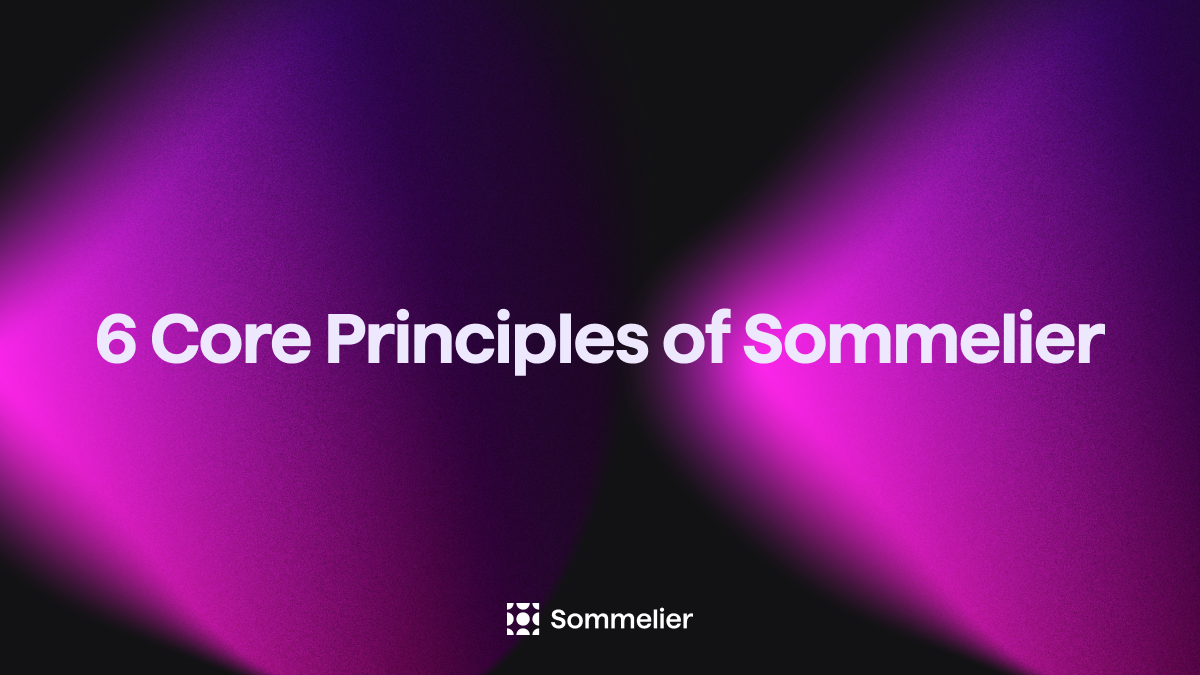
6 Core Principles of Sommelier

10/10/22 - Deep Dive on Cleargate Backtesting
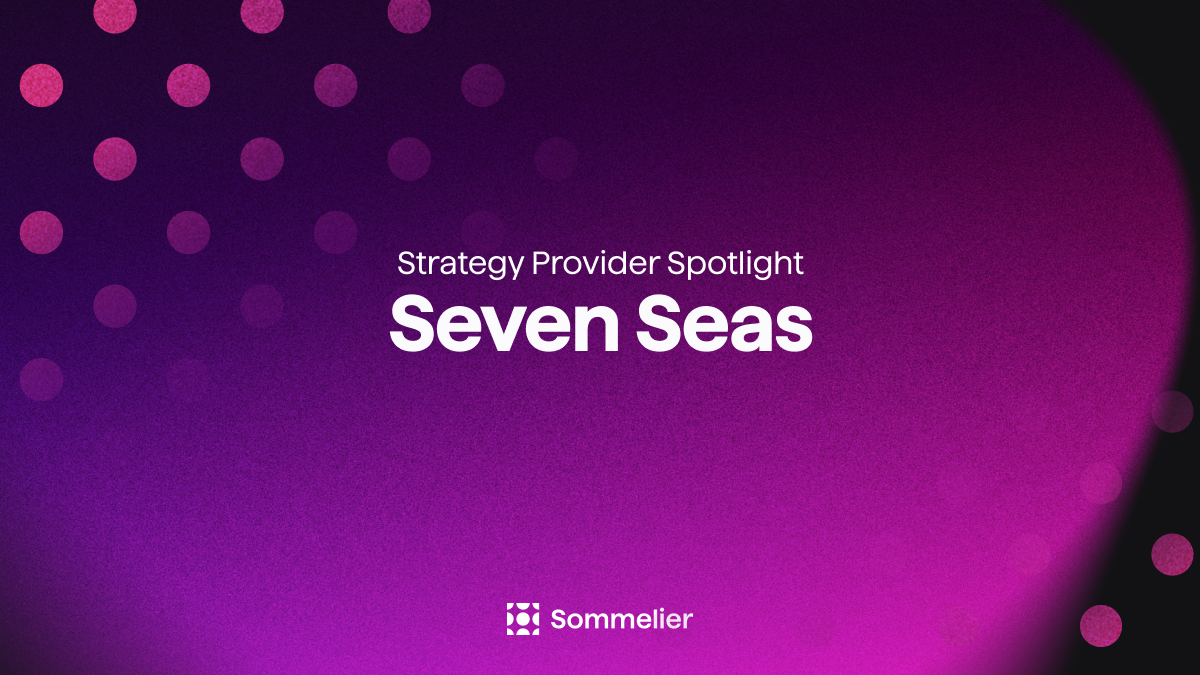
Strategy Provider Spotlight: Seven Seas

Deep Dive on Trend and Momentum Strategies

Strategy Provider Spotlight: ClearGate

Supporting Strategy Providers on Sommelier

Sommelier Protocol Team Weekly Update #11
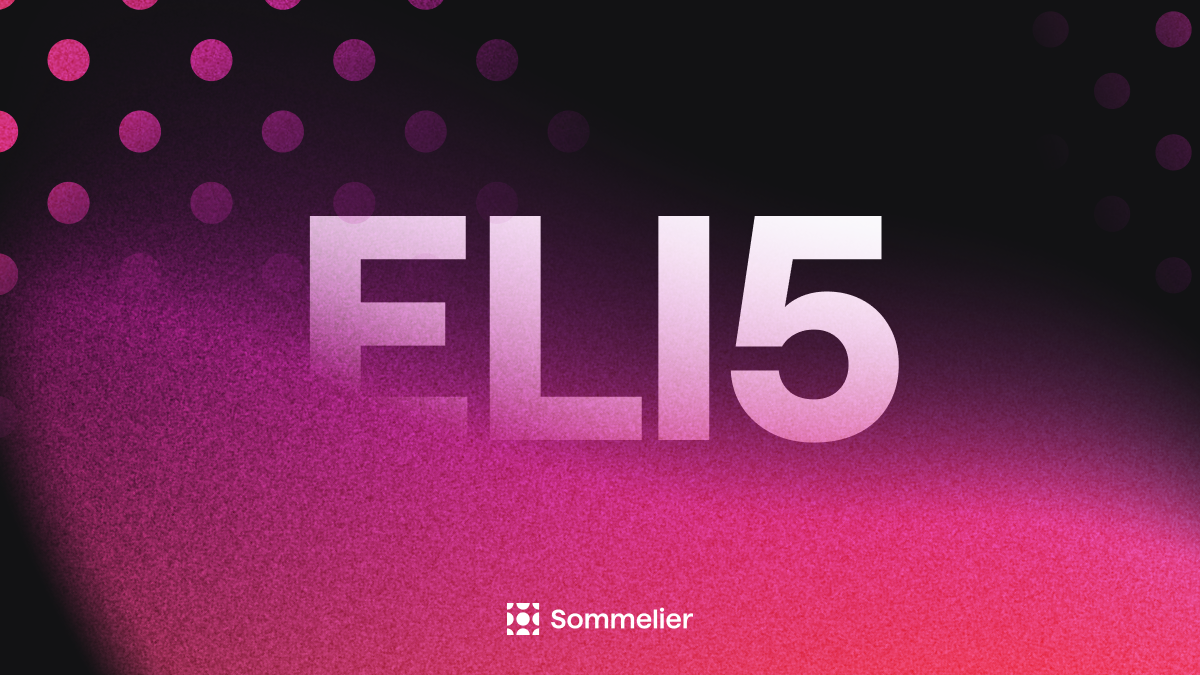
ELI-5 Explanation of the Data Science behind Sommelier’s First Aave Cellar

Sommelier Protocol Team Weekly Update #10
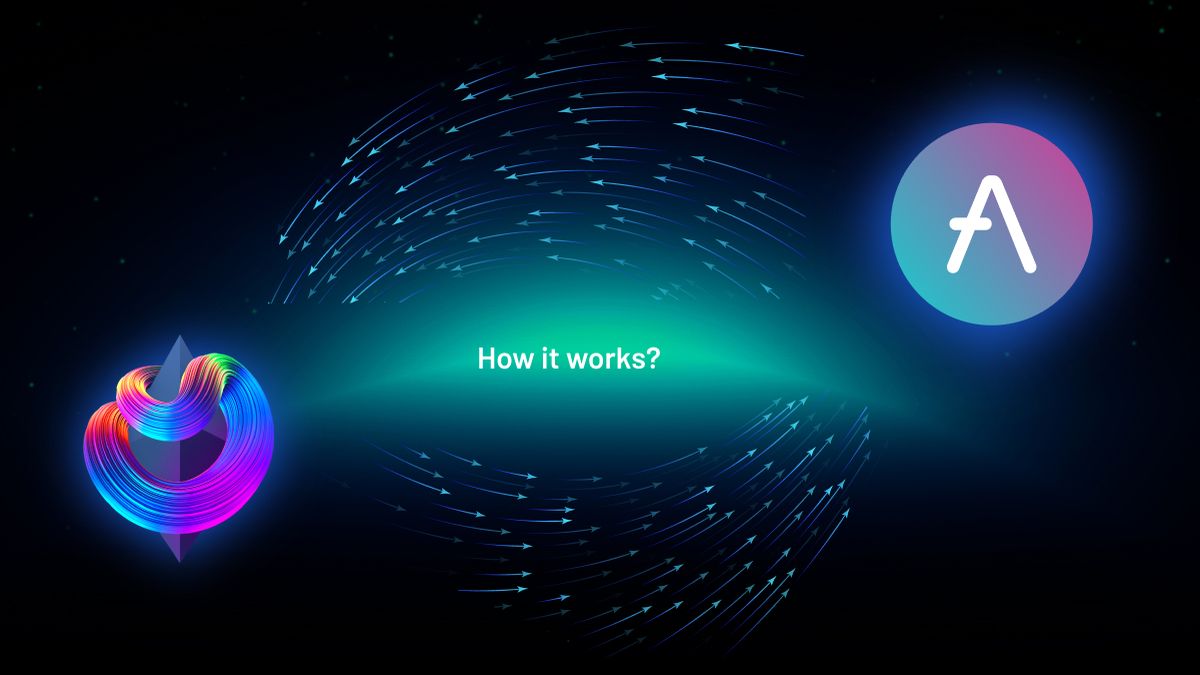
The Data Science Behind Sommelier’s First Aave Cellar

Sommelier Protocol Design Documents

Sommelier Protocol Team Weekly Update #9

Sommelier Protocol Team Weekly Update #8

Sommelier Protocol Team Weekly Update #7

Twitter Spaces With Sommelier: How to Launch a Cellar on Sommelier

Twitter Spaces With Sommelier: Protocol Upgrade and Community Update

Sommelier Protocol Team Weekly Update #4

Sommelier Protocol Team Weekly Update #6

Twitter Spaces With Sommelier: SOMM Airdrop Proposal Data Analysis

Twitter Spaces With Sommelier: Community Update on the First Cellars to Launch

Twitter Spaces With Sommelier: Exploring NFT Cellars

Sommelier Protocol Team Weekly Update #1

Sommelier Protocol Team Weekly Update #2

Sommelier Protocol Team Weekly Update #3

Three Things You Need to Know About Sommelier Governance This Week

Sommelier On the Road: PROOF OF…REPUTATION

Introducing Ukpai Ugochi - Working on The Sommelier Cellars Rebalancer

Sommelier Announces 23MM Series A Mainnet Round to launch Automated DeFi via the Cosmos

Twitter Spaces With Sommelier: Mainnet Launch & Gravity Bridge

Twitter Spaces With Sommelier: Introducing SOMM Tokenomics

Twitter Spaces With Sommelier: Mysten Labs AMA With Evan Cheng

Introducing SIPS and Sommelier’s Governance Structure

Twitter Spaces With Sommelier: End of Year AMA 2021

Twitter Spaces With Sommelier: Intro to SIPS & Lisbon Blockchain Week
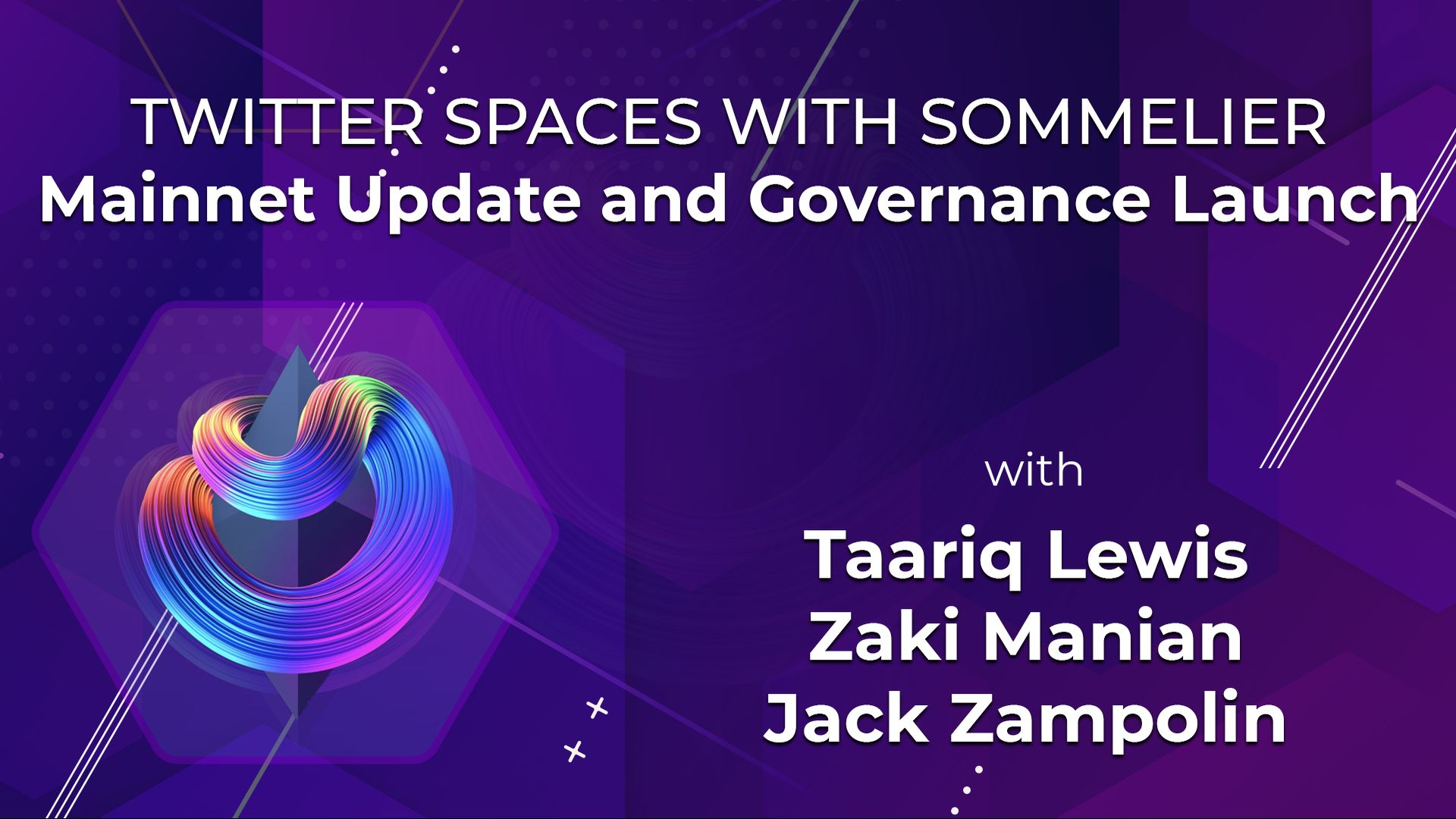
Twitter Spaces With the Sommeliers: Mainnet Update and Governance Launch

Sommelier Partners With Mysten Labs to Make Sommelier and All Cosmos Blockchains the Fastest Protocols on the Planet

Twitter Spaces With the Sommeliers: Sushi AMA With Joseph Delong

Introducing the Sommelier Network Mainnet and Ethereum Gravity Bridge

The Top Five Features of the Sommelier Protocol

Call for Validators: The Two Step Process for 2021

Two New Features Launched to Test Liquidity Management on Uniswap v3

Uniswap v3 Remove Smart Contract Incident Post Mortem for Sommelier

Call for Validators: Road to Sommelier Mainnet

Sommelier Liquidity AMA With Yenwen and Nick From Perpetual Protocol

Sommelier Liquidity AMA With Tascha Pan From Alpha Finance

Sommelier Liquidity AMA With Loi Luu From Kyber Network

Sommelier Liquidity AMA With Alex From Peanut

Sommelier Liquidity AMA With JP From THORChain

Sommelier Liquidity AMA With Alan Chiu From OMGX Network

Sommelier Liquidity AMA With Ari From Gelato Network

Sommelier Liquidity AMA With Sunny Aggarwal From Osmosis

A Fine Sommelier Explanation of Bollinger Bands With Kevin Kennis

Sommelier Liquidity AMA With Mona El Isa From Enzyme

Sommelier Liquidity AMA With Haxor From Method Finance

Sommelier Liquidity AMA With Tor From Secret Network

Liquidity Provider Insights With Zaki Manian - Ep. 7 - DeFi Automation Space on Uniswap v3 and Where Sommelier’s Heading

Sommelier Liquidity AMA With Geralt From CyberFi

A Pairings Tutorial of Two Sided Liquidity Addition with Sommelier

Liquidity Provider Insights with Zaki Manian - Ep. 6 - Liquidity Providers Need to Gear Up for a Multi-Chain World

Three New Summer Features for Liquidity Providers

Sommelier Liquidity AMA with Tom C and Max W from Charm

Sommelier Liquidity AMA with Dereek69 & Shalaquiana from BIOPset

Sommelier This Week - June 3rd 2021: The Road to Mainnet

Sommelier Liquidity AMA with Federico Landini from DefiLab

Sommelier Liquidity AMA with Michael Egorov from Curve

Liquidity Provider Insights with Zaki Manian - Ep. 5 - A Bright Light at the End of a Long, Tough Weekend for Bitcoin

Sommelier This Week - May 27th 2021: What Aspiring Sommelier Validators Need to Know on Last Week’s Protocol and App Progress
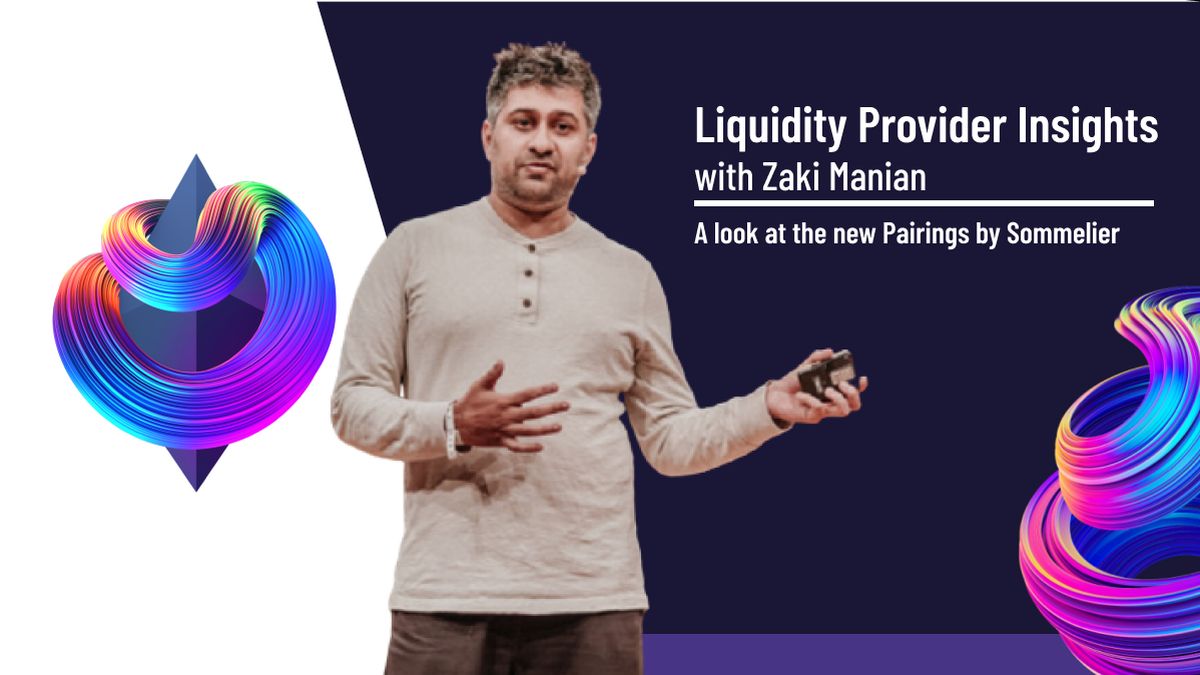
Liquidity Provider Insights with Zaki Manian (Special Edition) - Ep. 4 - New Pairings Release

Sommelier R&D AMA With Yaniv Tal From the Graph
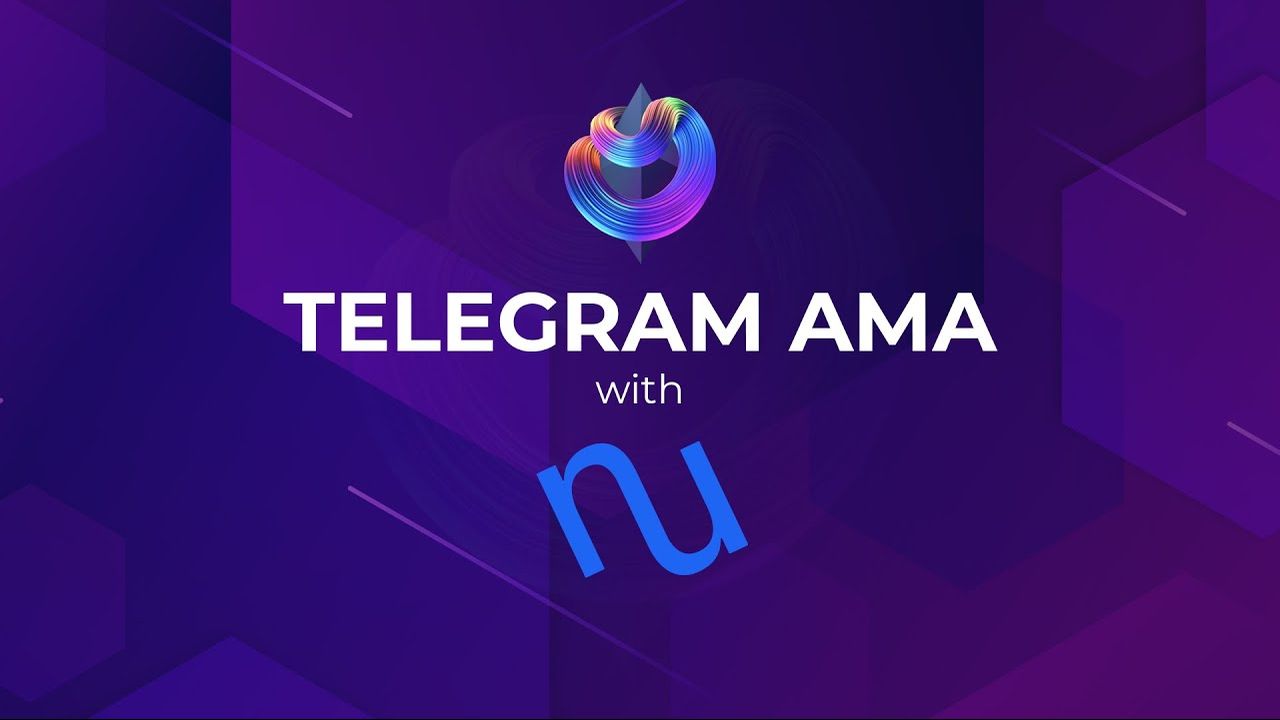
Sommelier Liquidity AMA with MacLane Wilkison from NuCypher

The Eight Steps to Become a Liquidity Provider with Pairings

Sommelier NFT Awards - May 18th, 2021
Pairings By Sommelier: The FAQ

Zaki Manian Breaks Down What Liquidity Providers Need to Know Under Uniswap v3

Sommelier This Week - May 6th 2021: How This Week’s Protocol and App Progress Weaves Together to Make a Product

Sommelier Liquidity AMA with Dan Thomson from InsurAce

Sommelier This Week - April 29th 2021: Weeks Away From a Taste of the Sommelier App Experience and How the Dev Team Stays on Track

Zaki Manian Breaks Down a Phase Change Liquidity Providers Need to Know About Automated Market Makers

Introducing Jehan Tremback: Sommelier Core Developer and Althea Co-Founder that pushes the Limits of the Blockchain Bridge with Gravity

Sommelier This Week - April 22nd 2021: An Inside Look at Progress on Coordinating Sommelier Components That Contribute to the Chain

Sommelier This Week - April 15th 2021: Providing a Best-in-Class Experience for Uniswap Liquidity Providers

Sommelier Announces $1M R&D Grant from The Graph Foundation
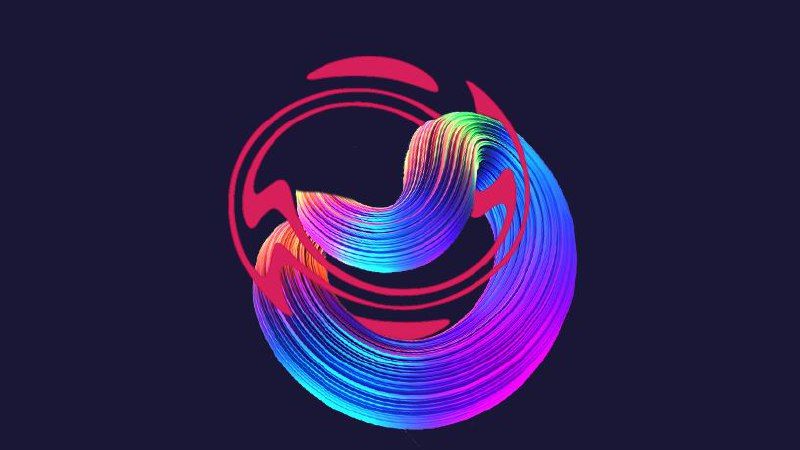
Introducing LP Rewards: This Week With Cellframe
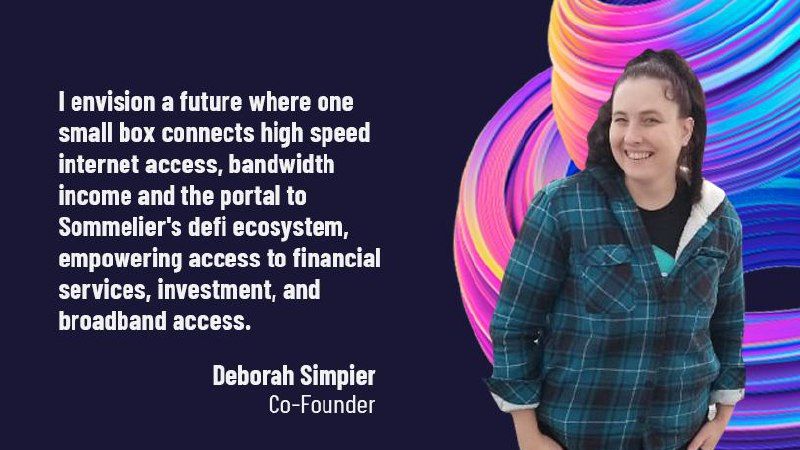
Introducing Deborah Simpier: Althea CEO and Sommelier Co-Founder Who Brought the Gravity Bridge to Life in The Cosmos

Sommelier This Week - April 8th 2021: What Uniswap v3 Means For Sommelier Architecture and Validators

Introducing Sommelier LP Rewards Program

Sommelier This Week - April 1st 2021: Gravity Bridge and Private Testnets

Blockchain startup decides to acquire a California winery and host NFT wine parties

Introducing Justin Kilpatrick: The Blockchain Bridge Wizard Who Maintains Gravity

Five Ways UniswapV3 changes the world for Liquidity Providers on the AMM
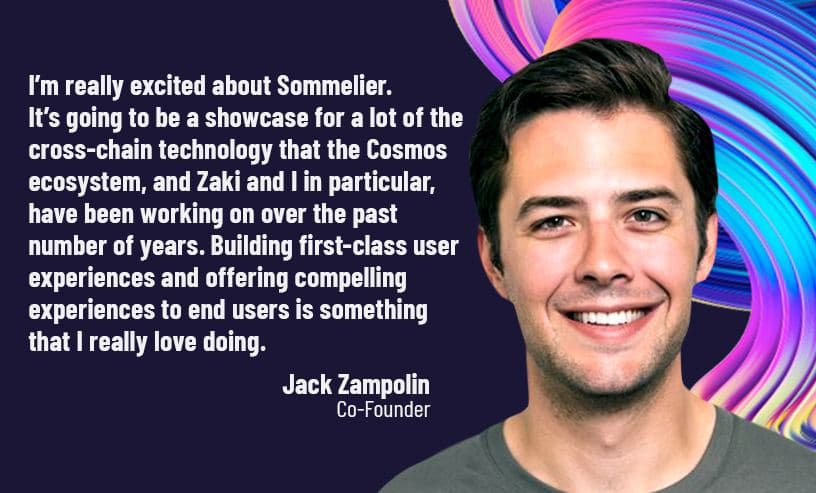
Introducing Jack Zampolin: On Becoming A Sommelier in The Cosmos

Sommelier: Welcome To The New CoProcessor For Ethereum
© 2025 Somm by Bajanss OÜ –Maakri 36-50, Tallinn, Estonia 10145